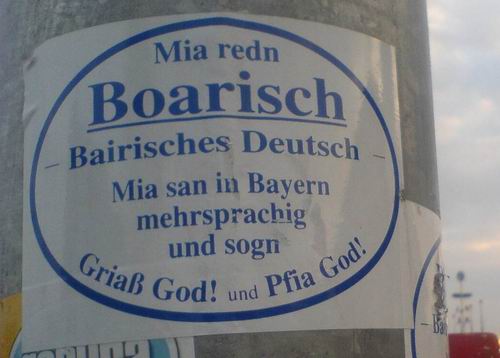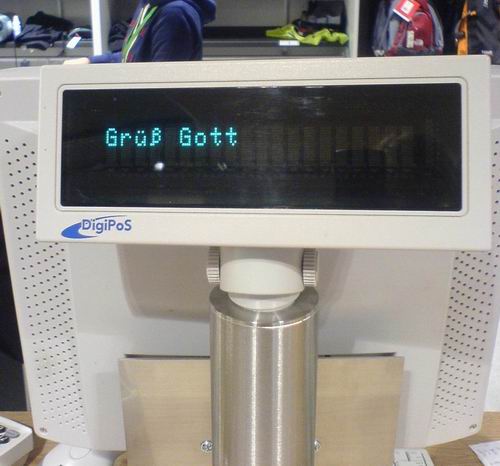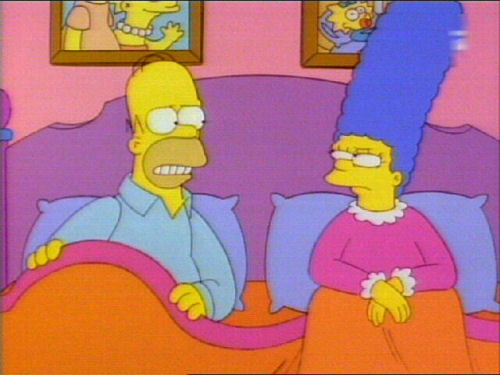
The owner of this birch (tree) runs a garage and I was told that he had put some old tires around the tree when it was still small.
This is my last day in Suderburg. YEAH! :-)

The owner of this birch (tree) runs a garage and I was told that he had put some old tires around the tree when it was still small.
This is my last day in Suderburg. YEAH! :-)
E V E N T U A L L Y! :-)
Weiß jemand was Askarideneier sind?
Eben.
Steht aber so jetzt in meiner aktuellen Hausarbeit zum Thema “Umgang mit Klärschlamm unter Berücksichtigung der Wertstoffrückgewinnung”.
a.k.a. “Wie schreibe ich eine Hausarbeit innerhalb von 5 Tagen, die mit einer total unbedeutenden Benotung nicht mal ins Diplom eingeht – mich in ihrer Themenstellung aufgrund des schön erdigen Geruchs von ausgefaultem Klärschlamm aber immer wieder an das Praxissemester auf der Kläranlage Bremen erinnert?”. Klärschlamm ist einfach sexy. Jaa, musste mal gesagt werden.
joke of the day:
I am about to sell my old ’89 Volkswagen Golf II on sunday afternoon and just completed the excel sheet I have been maintaining over the last 5 years to keep track of car-related expenses. A cost overview where I would enter amounts spent on insurance, tax, repairs (maintenance) and – most importantly – petrol costs.
Different friends have been laughing about this to some extent, as I always noted down the mileage whenever I refueled the car and collected the bills. To their understanding, there would be no need in having an overview what the overall car costs are, also since the car is too old. It has been my first car though, which is why I wanted to have an overview of what I have repaired during the years and how much I’ve spent on this and that. Also, knowing how much petrol the car consumes indicates up-coming problems with the sparks, carburetor, petrol pump, etc. – just think of it as a regular, passive medical check-up.
Well, turns out I’ve driven the car for a total of ~ 71.000 kms during Feb. 2001 and Sept. 2006 (68 months), spent ~ EUR 895,- on tax costs, ~ EUR 2063,- on insurance costs, ~ EUR 2.892,- on repairs (cheap!) and ~ EUR 4.687,- on petrol – which generates a total of ~ EUR 10.537,-. And please be reminded – I bought the car for ~ EUR 1.636,- EUR in Feb. 2001 ( DEM 3.200,-).
Now, I did a lot of minor repairs by myself and have a friend who runs a garage and we had this deal that I would help him out with some computer stuff and he would repair my car whenever professional work would be needed. I bought spare parts at a wholesale price level and even ordered a new exhaust system via Ebay one day for a very jua kali price. Tax costs could have been lower by installing a different engine starter which would have lowered the tax classification from Euro1 to Euro2 – but it didn’t make sense for such an old car. Insurance costs where relatively cheap as I had registered the car on my Mzee’s name who got a huge discount. Petrol costs in Germany have risen for at least 27% during 2001 and 2006, which also explains why I’ve travelled even less kilometres with the car during the last two years (2005: 7.000km, 2006: 4.000km).
I think it’s interesting to know that you can buy a car for a small price but are forced to spend huge amounts on maintaining it. Also, when I look at unavoidable costs like insurance, tax and petrol (average consumption ~ 8l/100km), it seems that I did the right thing by buying an old (very old) car instead of leasing a new one. After all, I spent an average of about EUR 0,17 per driven kilometre – which is cheaper than what I would have spent on a new Toyota or so.
Now what is needed is to compare these expenses with others in Kenya and the US (for instance). Anyone?

(Aufkleber auf der Wiesn, fotografiiiiert von der Wiesngschbusi Mbuzimoja)
…was man sich dann ungefähr so vorstellen darf:

(beim Sport Schuster, neulich an der Kasse)
BayerischBairisch für Anfänger (Quelle)
Als Wiesn-Besucher sollten Sie sich darauf einstellen, dass auf dem Oktoberfest viel Bayerisch gesprochen wird – viel mehr als es üblicherweise in München der Fall ist. Grund dafür ist vermutlich die hohe Anzahl derer, die aus dem ländlichen Bayern in die Großstadt kommen, um auf der Wiesn zu feiern.
Als Nichtbayer empfiehlt es sich, einige Begriffe aus dem Bayerischen zu kennen, um mögliche Missverständnisse gar nicht erst aufkommen zu lassen. So ist eine „Fotzn“ kein vulgärer Ausdruck für ein Geschlechtsorgan, sondern bezeichnet eine Ohrfeige. Und wenn von einem „Stamperl“ die Rede ist, so ist damit nicht ein stämmiger, stark untersetzter Mensch gemeint, sondern ein Gläschen Schnaps.
Hier einige Ausdrücke, die Sie kennen sollten:
Griasgood / Griasdi Guten Tag / Grüß dich
Griaseichgood miteinand Grüß Gott zusammen
Deaf I? / Ealaums? Darf ich? / Erlauben Sie?
Is da no frei? Ist hier noch frei?
A Maß (unbedingt mit kurzem a aussprechen!) Ein Liter Bier
Brezn Brezel, Brezen
bieseln urinieren
Schmaizler Schnupftabak
Radi Rettich
Hendl / Gickerl Brathuhn
Stamperl Gläschen Schnaps
Obatzda Paste aus Camembert und Zwiebeln, gewürzt mit Paprika
Ha? Wie bitte?
Host mi? Hast du mich verstanden?
Ja mei wörtlich zu übersetzen; bedeutsam ist hier die Betonung: ein kurz gesprochenes "ja mei" bedeutet wenig Interesse an einer Sache, ein gedehntes "ja mei" mit steigender Stimmhöhe schon erfreutes Erstaunen und ein seufzendes "ja mei" höchste Anteilnahme. Norddeutsche benötigen hingegen meist einen Wortschwall, um ihre Gefühle so differenziert ausdrücken zu können.
Jaggal Jäckchen
Des is mia wurscht Das ist mir egal
Ja, mi leggst am Oarsch! / Ja, do legst di nieda! Donnerwetter! (Ausruf des Erstaunens)
Aff / Depp / Hirsch Nicht als Beleidigung zu verstehen; herzlicher Umgangston
Saupreiß Saupreuße (Schimpfwort für alle Nichtbayern)
Bussl Küsschen
Gaudi Vergnügen
De hod Hoiz vor da Hüttn Die hat eine große Oberweite
Schleich di Verschwinde!
Watschn / Fotzn / Schejn Ohrfeige
Dangschee Vielen Dank
Servus / Pfiat di / Pfiat eich Auf Wiedersehen

AOB: the analysis of the blog's short stats reveals that an often used keyword was the expression "en attendant godot". Is it THAT serious? Oh my... :-) "Nakumatt" of course still beats everything else out there. Or in other words: Dear Kenyan bloggers - in need of some more traffic on your blog? Blog about Nakuru Mattress more often and the stats will make you jump. Now someone go and tell Google AdWords about that :-)
As promised 3 months ago, I would like to continue my series on contemporary Kenyan art and let me please mention that it will never be complete or even in-depth – just a small scratch on the surface of the ever growing art scene. Also, I needed to blog this now as long as I am on bandwidth here :-)
Earlier this year in May 2006, I visited the Kenyan painter Evanson Kangethe Njuguna at his shamba north of Nairobi (off Tigoni Road, somewhere in Limuru) and the first thing that greeted us at home was his cow. For a city kid like me, this of course was the perfect reminder of the overall rural lifestyle in Kenya. Whereas a lot of fellow Nairobians would consider this shaggz-style somewhat awkward, me must not forget that the majority of Kenyans live in rural areas and that this does not necessarily represent a negative, underdeveloped lifestyle. After all, Evanson has it all: a beautiful wife, healthy children, water, a shamba….and lots of space to follow his ideas. But the best thing about him is that he has a good heart and colourful dreams. And like many other artists, he knows how to mold them into art. Art that eventually and hopefully sells and manages to feed a family.
I met Evanson at the library of the Goethe-Institut in Nbo where he showed me a pic he had been working on and invited me for a date at his place. Showing ppl around and inviting them to have a look at the art work is one of the main jobs of Kenyan artists – as exhibitions often only generate a temporary publicity and galleries (like the one of Mr. Shah I mentioned earlier) only provide very low revenues. Apparently, being a professional painter comes with a lot of burdens and equals an inconsistent income. I told him that I am just a student these days without any income at all, but that I could at least try to promote him in one way or the other, and also try to compile a blog entry on him where I would show some of his works.
Evanson had been in Germany during the 1990s and even managed to exhibit some of his works in Europe. After a longer talk about the art scene, politics and other sociologically interesting subjects, I took pictures of his work and he meanwhile searched for some older photos. Well…until then I hadn’t told him about my Mzee who was working with him before, but when I told him, Evanson jumped up and picked out of this image of my Mzee and him – shot sometime in 1993 or so. THAT situation made me cry for a moment – inside. My Mzee is old and sick, and can’t remember much these days. Being in Kenya and meeting these people who had been working with my Mzee for some time and are full of praises for him makes me feel at home. It’s like rediscovering parts of your own family from an outside perspective – a good feeling.
Anyways. I told him about these two paintings I have at home – and Evanson quickly picked out this polaroid of his archive, showing the actual painting at home.
His archive? Yes. Like many other artists, Evanson keeps record of his works and stores important papers in his shelve:
Now, let’s focus on his work. The following photos are just snap shots of his work in his studio – I am still a lousy photographer so pls try to bear with me while I tried to focus on content. Also, there’s no chronological order – I only know that the following picture is one of his earliest works:
leather works
sculptures and paintings
smoke art
“Kangethe is a social chronicler who portrays everyday Kenyan life experiences in a charming, whimsical style. He captures both rural and urban life. Kangethe’s works say much about the changing times in Africa and how to make the best out of challenging situations.
Social realism is only one aspect of his developing style. Kangethe is well versed in various artistic trends and schools. He seems to have been fascinated by the Impressionists, who, like himself, were intrigued with the playful effects of light and color. Kangethe grew up the son of a florist, so intuitively has a glorious sense of color.” (source)
I really like the head+tongue painting. Good art – to me – is the combination of interesting elements with lots of passion. While the photographs here just portray a small portion of his work, and also not his best (at least not all of them), it does show that Evanson has a creative mind and is always searching for new ways to express these emotions inside. Different techniques! Or would you rather prefer to invest your money into well known trademarks – like Jak Katarikawe’s cow pictures? Customers decide. But that’s another story…
For more pictures, please feel free to have a look at the complete flickr collection of snap shots I took in May 2006 at Evanson’s place. Karibu(ni)!


How could she ever marry him in the first place?